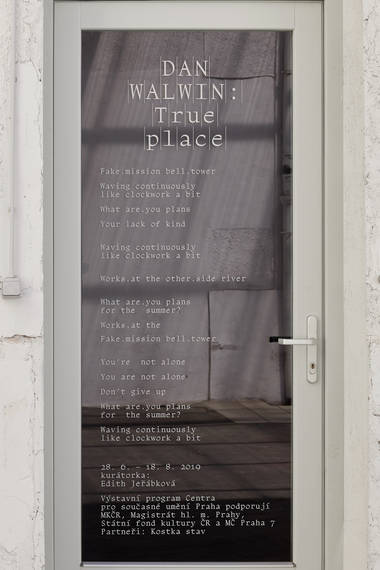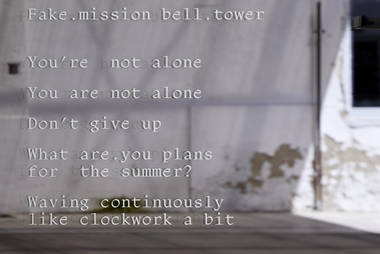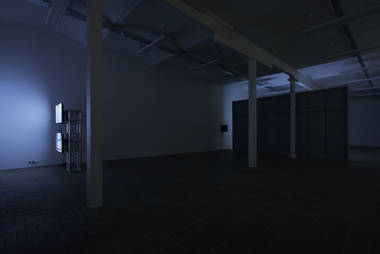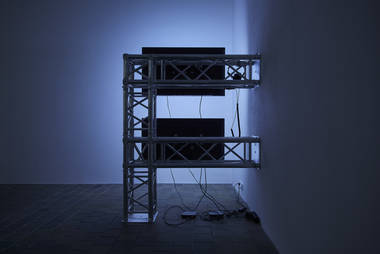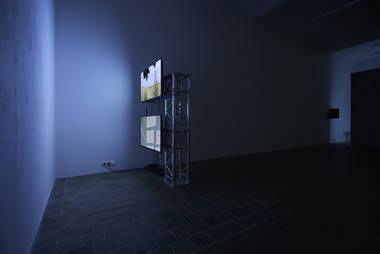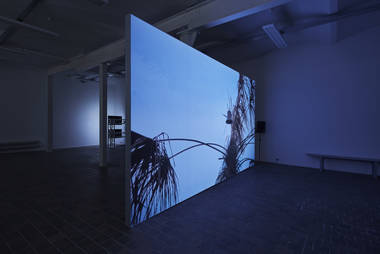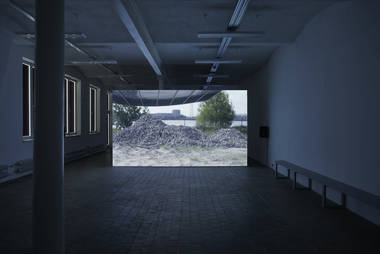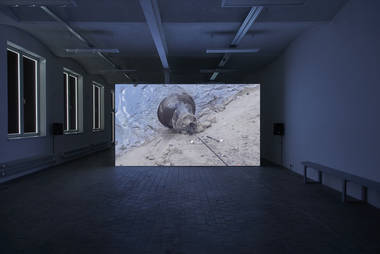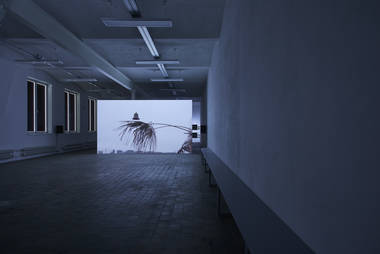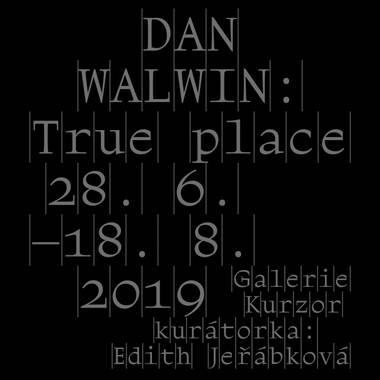Dan Walwin: True place
June 28 – August 18, 2019
opening: June 27, 2019
An Interview with Dan Walwin
Edith Jeřábková
Dan, your films are not very narrative.
I think they are in their own way. And, of course while they still undeniably are, I still seem to persist in not thinking of them as “films” so much. They feel more like videos designed for a demonstratively practical purpose, as if it’s footage for “review”, more than something to lose yourself entirely in, and so often there is made deliberate space for distraction and drift. In this way I often seem to apply the logic of making an exhibition within videos. The choices in constructing an atmosphere is made hopefully to allow viewers to have more of a sense that these forms exist to be negotiated and configured with a degree of freedom, like a provisional open-source manual, as much as they would like the chance of being definitively “lyrical”.
They certainly include approaches that are used in narrative formats. Like they want to tell a story, but they, for whatever reason, can’t. They create an atmosphere and a suggestion and then “the plot” suddenly stops in a repetitive scene, clinging onto environments which in traditional narratives play a background role, but here they become both subjects and scenery at the same time. The plot wants to go forward, but it cannot, as in a dream, or a recurring memory.
Yes, many methods involved with producing images (like in “film”) seem very exciting when considering how many permutations are possible – configurations of a subject and camera to be endlessly re-adapted, and inverted and round back again. Perhaps my attention is directed towards different components rather erratically – lingering too long on one thing or not enough on another. But nonetheless I’m still interested in creating things with the potential for affecting experiences for audiences, trying to identify formulas and modulate them within systems of logic applied within works.
It seems that you are trying to create an inner world of film and exhibition where things do not exist only as representations. I imagine you must spend most of your time searching and thinking about the environments for your exhibitions and films. They are specific as well as general, often resemble some more or less urban wilderness, and somehow always remind us of a unique mixture of generic, public, and (sub)cultural sites. We feel we know them from somewhere, or we suspect that they were made with CGI for our pleasure. I find that the ratio of specific and generic is used very precisely in your work.
Thank you, that’s good. I’m constantly reflecting on what it is that makes for authenticity – I aspire to be able to make works that have a sense of “realness”, if only one that makes it so only for themselves. I think it’s useful to consider what we always consider a “realistic” depiction, and how it varies so wildly over time and place. It seems, then, more interesting to run with digging out a completely subjective course, being measured by its meaningfulness in order to be worthwhile to share. Noticing things creates surprise, which is exciting to channel – being a re-routing of something that already exists to somewhere else.
Your work does not want to serve the viewer, does not want to be a plain mediator, wants to be almost its own entity – is it possible?
Works always run the risk, of course, of simply being of too little interest to mean something to anyone else. I think part of these particular works’ programming is that they embody a kind of blankness, or posturing as such for effect, but hopefully things seep through despite this kind of bluff. For sure I’m curious about the relationship of film/video to exhibitions and museums and the experience that these spaces and methods of display create, and the way they function. They seem to me in many ways close to film by their nature of being arranged specifically for the purpose of viewing, in a pre-determined and organised system. But if anything, and in connection to your next question – Are the environments inspired by games or what is their DNA? – I think exhibitions are even more like games, in the sense that it’s more intended for you to determine your own course through an environment. The pragmatism and efficiency of film can often feel like violence.
To make the videos alive you experiment a lot with movement. Trembling, wobbling, returning, perfections and imperfections, slips, sticking, sharpening and blurring, and repetitiveness are technological themes, but they are not the subject of interest, they create a psychological image and send it back to the human viewer. It tempts her/him to the old ways of reading. Repetitive shots force the viewer to expect a revelation, and it is clear that it cannot come, but s/he is still awaiting it. So, this hypnotic image is about us, about people, even though we’re hardly in your movies.
I think this is pretty spot-on and very good.
At the time that we’re conducting this interview, your works for the show are still in progress. We talked about the fact that we would like to intensify the relationship between sound and image more precisely, the sound moving beyond the video in physical space. Sound and silence in your previous works are always very important meaning-making components that are not only dependent on an image, they can have their own agency.
In the way I “use” sound I repeatedly feel as though I’m only scratching the surface. I mentioned earlier about the balance between different components in works and the possibility for constant inversions and re-configurations to occur, and I feel like this is consistently under-developed in the use of sound – for me, at least. I’m frustrated by how I’m not able to achieve more complexity in this fusion between sound and images. Sound is capable of being a totally effective way of imparting information, capable of provoking perhaps the deepest emotional affect, and at the same time can also be considered very much a physical and “sculptural” form, which is perhaps even more present physically for a viewer (or literally immersive, in terms of acoustic form). The new works produced for this exhibition are partly a response to the relative expansiveness of the gallery (which is simply one large space) that suggested a chance to create a system that plays with dynamic shifts between scale of sound and image. And actually, I’ve quite rarely had the chance to present work with amplified sound like this, so it’s exciting.
When things appear in videos, there is a suggestion that they can be communicated in the physical space within the installation. I like the way you incorporate media in classical forms like drawing, text, or sculpture into the entire structure of an exhibition. Can you reveal a bit about how do you work in physical and virtual space? How different are they and how connected are they?
Yes, it’s like making a garden a bit. That involves creating a regulated system (by making decisions for the audience), and yet relying on working with elements that have a life of their own (the audience always bringing something unique themselves). The continual failure or delusion in attempting to regulate and impose order might actually be the fault line from which things grow. The trepidation towards maintaining this fraught balance is what can make it interesting.
I am constantly going back and forth between the ideas of “showing” and “telling”, and also having them counter one another as a means of undermining their forcefulness or reinforcing their potential. Creating objects for exhibitions in the past felt like making a space for people to inhabit, making them more like actors themselves. However sometimes it doesn’t require very much at all to evoke something effectively – even just a few words might do it; this could be seen as the equivalent of a more “immersive” environment, just on a different scale.
The exhibition programme of the Center for Contemporary Arts Prague receives support from the Ministry of Culture of the Czech Republic, Prague City Council, State Fund of Culture of the Czech Republic, City District Prague 7
Partners: Kostka stav
Media support: ArtMap, jlbjlt.net and UMA: You Make Art
